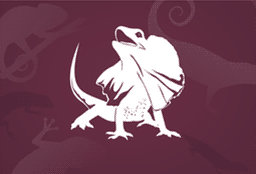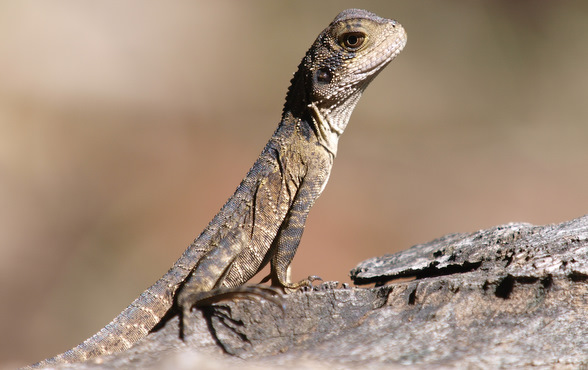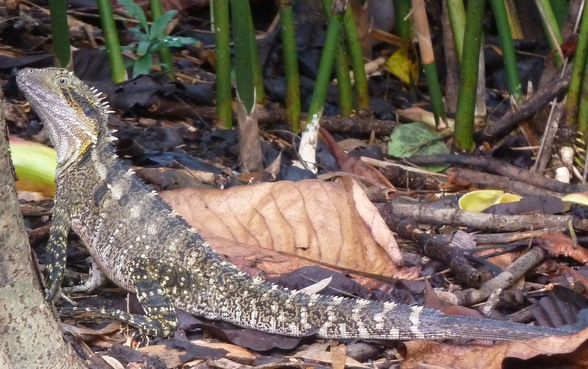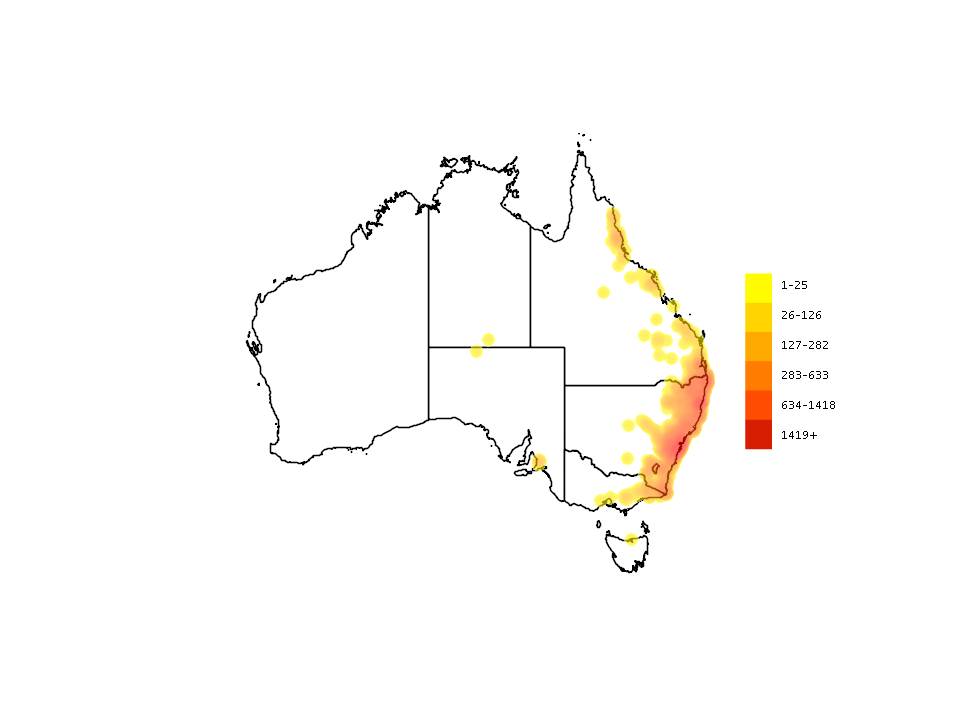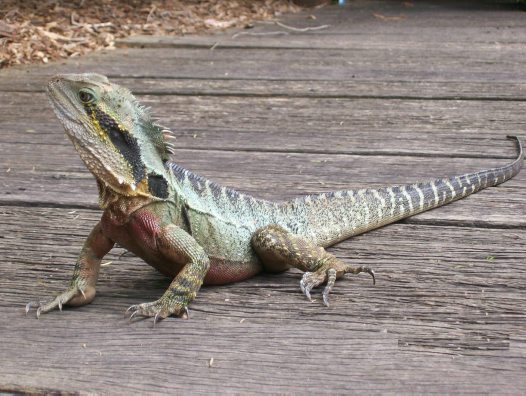Behaviour
Diet
Both plants and animals, including insects, frogs, small reptiles and mammals, yabbies and other water animals, fruits, berries and flowers. It can eat both on land and while underwater.
Movement
A semi-aquatic lizard, it spends much of its time lazing on rocks, logs and tree branches overhanging or alongside creeks and rivers, but will dive into the water at the first sign of danger. It is a good tree climber and a powerful swimmer. It walks on all fours, but will run on its back legs to gain speed. It sleeps either in vegetation or, particularly in colder weather, in water. In the cooler areas of its range, it digs a hole under a log or rock and hibernates from autumn through winter, emerging from late winter to mid spring.
Breeding
Occurs from spring, starting in warmer and more northern locations. Mating occurs near waterways and the male is very territorial during this time. He will perform a series of head bobs, arm waves, tail flicks and arm waving to discourage other males from encroaching on his territory. After mating, the female lays between six and twenty eggs in a nest dug into soft soil above the floodline of a nearby waterway. Eggs are usually laid one or two hours before sunset. The female lies above the nest to deposit her eggs and then covers them with soil. The eggs hatch after about three months, and the young are completely independent from birth. There are usually two clutches each season, laid about one month apart.
The temperature of the nest during incubation determines whether more males or females hatch from the eggs. This is known as temperature-dependant sex determination (TSD). Nest temperatures are usually between 22°C and 32°C, with more females being born if the temperature drops below 26°C or rises above 28°C, and more males being born if the temperature remains between 26°C and 28°C.
Field Guide
Improve your identification skills. Download your Australian Water Dragon guide here!

